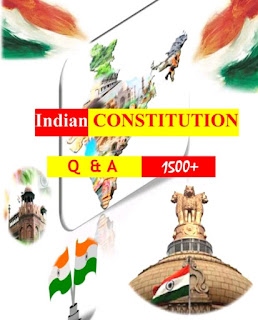Introduction:
India is one of the front runners in space technology .With the multi dimensional applications space technology ensures, India is moving in the right direction.
India’s achievements in space science and technology:
Recently PSLV launched 104 satellites in to space in one launch.This is the first for any space agency.
Mangalyaan, 2014:
India joined an exclusive global club when it successfully launched the Mars Orbiter Mission on a shoestring budget that was at least 10 times lower than a similar project by the US.
Chandrayaan, 2008:
India’s first unmanned lunar probe was launched almost a decade ago and was a landmark in India’s space mission.
Indian Regional Navigation Satellite System, 2016:
The seven-satellite system created India’s very own satellite navigation system e terrestrial and will provide services in marine navigation, disaster management, vehicle tracking and fleet management, and navigation aide for drivers.
Reusable Launch Vehicle, 2016:
In May 2016, India successfully tested the Reusable Launch Vehicle.
Successful launch of GSLV with Indigenous Cryogenic Stage
Development of Next Generation Geo-Synchronous Satellite Launch Vehicle Mk III
GAGAN (GPS Aided GEO Augmented Navigation):
It is primarily being used in aviation sector for precise position information services.
With this, India becomes the third country in the world, after USA and European Union, to offer Global Navigational Satellite System (GNSS) based precision approach services to civil aviation sector.
Application of space technology in socio-economic development :-
1.Economic:-
Agriculture:-
Remote sensing satellites provide key data for monitoring soil,snow cover,drought and crop development.
Rainfall assessments from satellites,for example, help farmers plan the timing and amount of irrigation they will need for their crops.
Accurate information and analysis can also help predict a region’s agricultural output well in advance and can be critical in anticipating and mitigating the effects of food shortages and famines.
Acreage and production estimates for the principal crops such as wheat, rice, sorghum, cotton, mustard, and groundnut using Forecasting Agriculture Output using Space Agrometeorology and land based observations (FASAL).
Precision farming using IRNSS.
Identification of diseases of crops through hyper spectral method.
Wasteland mapping, watershed development and monitoring as well as help in fisheries sector for augmentation of income.
Agro Metrological (AGROMET) Towers to measure soil temperature, soil moisture, soil heat and net radiation, wind speed, wind direction, pressure and humidity; Flux Tower for multi-level micrometeorological observation as well as subsurface observations on soil temperature and moisture over the vegetative surfaces.
A number of academic and research institutions as well as industries participate in the Indian space Programme.Several Indian industries have the expertise to undertake sophisticated jobs required for space systems.
Resources:
The other major application of space technology is the use of earth observation satellites for resources survey.
Investment:
Space science always puts high demands on technology and these technologies could be n important investment for sophisticating future application missions to bring increased benefits to society.
The successful conduct of planetary missions like Chandrayaan and Mangalyaan puts India in an exclusive club and this in turn gives the right credentials for international collaboration and cooperation on an equal partnership basis.This will develop both scientific and space manufacturing industry in India
Foreign Exchange source through revenue.
Commercialization of space launching technologies by ANTRIX has resulted into economic gain.
The data is used for several applications covering agriculture, water resources, urban development , mineral prospecting, environment, forestry, drought and flood forecasting, ocean resources and disaster management.
2.Social:
Disaster management:
It plays a vital role in delivering cyclone warnings and is used in search and rescue operations
Use of INSAT for e-governance and developmental communication applications is also fast expanding.
Doppler Weather Radar (DWR) to monitor severe weather events such as cyclone and heavy rainfall.
Satellite communication:
Another application of satellite communication is Satellite Aided Search and Rescue (SAS&R), as a part of India’s commitment to the International COSPAS- SARSAT programme for providing alerts and position location services for aircraft and ships in distress.
Scientific Temper :
ISRO through it’s achievements can attract millions of young minds towards science and further ISRO can ignite these young minds through collaborations with various colleges, schools and universities like NASA.
Finding prospective groundwater zones to provide drinking water in villages, providing land and water resources development plans at watershed level using IRS.
Tele-fishery:
VRCs located at coastal tracts are being provided with near real time information on satellite derived Potential Fishing Zones (PFZ). Information pertaining to inland fisheries, aquaculture, etc., is also provided through VRCs as relevant.
Telemedicine:
Introducing telemedicine via satellite for making speciality treatment accessible to people in remote areas of India.Places around Bangalore,Kolkata and Tripura are networked with a hub using VSAT terminals.
Biodiversity information system:
Use of space technological tools for characterization of biodiversity at a landscape level.
Find us at facebook click here








